Committee Blog: Hop Latent Viroid (HLV) – Overview of Pathogen Biology, Spread, Control, and Testing
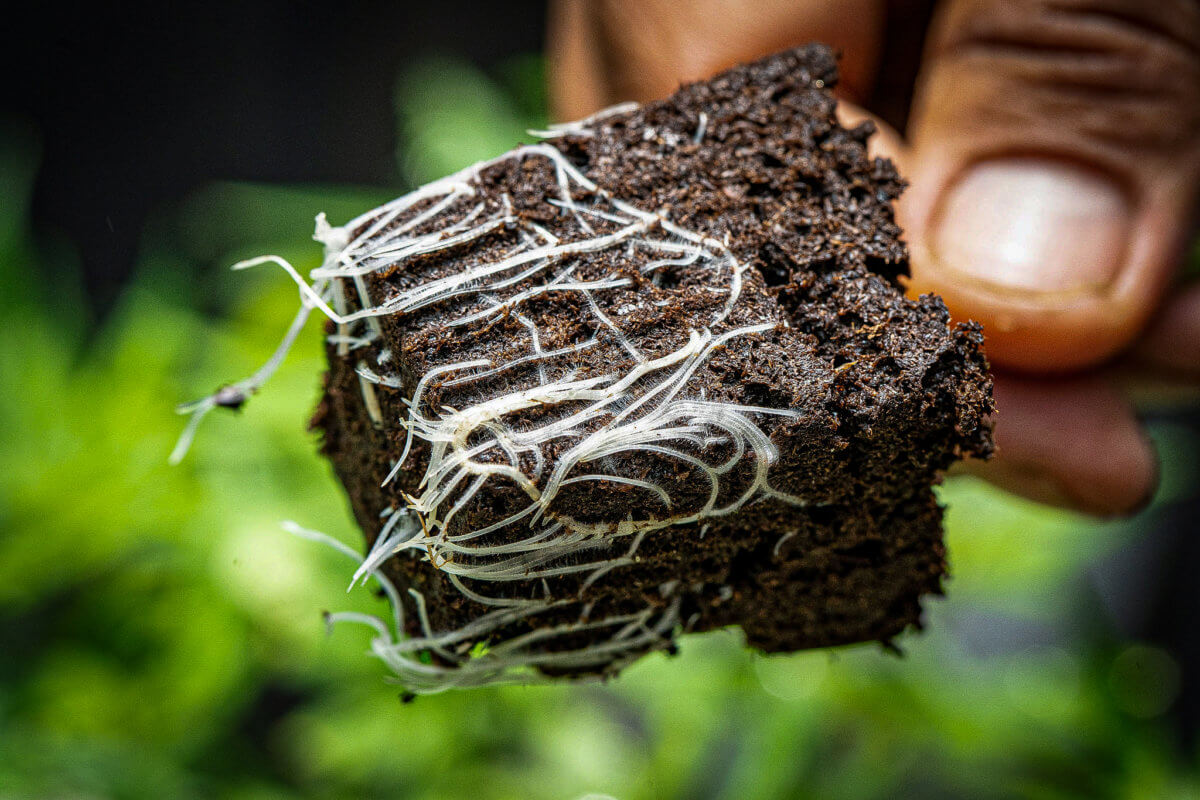
by Sarah Taylor-Laine (NCIA Education Committee, NCIA Cultivation Committee)
Hop Latent Viroid (HLV/HpLV), sometimes referred to as “dudding” or “stunting”, is one of the most pressing biological threats facing the cannabis industry worldwide. In the United States, HLV was first detected in California in 2017. Subsequent research by Dark Heart Nursery indicated that 90% of Californian facilities tested at the time were positive for the pathogen. The Dark Heart Nursery research team estimated that an HLV epidemic could result in up to US$4 billion in losses to the cannabis industry annually. To add insult to injury, HLV-infected cannabis may be linked to cannabis hyperemesis syndrome (CHS), which affects both adults and children.
As the name suggests, HLV was first detected in hops (Humulus lupulus; Cannabaceae). Outside of the United States, HLV has been detected in hops in New Zealand, the United Kingdom, South Korea, Japan, Brazil, the Czech Republic, Poland, Slovenia, Germany, China, Belgium, Turkey, and Canada. Within the United States, HLV has been detected in hops in Washington, and in cannabis in California, Colorado, Nevada, Oregon, and Washington. However, these are only officially-published reports and given the worldwide occurrence, HLV is likely to be endemic to many locations not listed here.
Viroids are subviral pathogenic RNA molecules which replicate within host plants and are only approximately 1/50th the size of the smallest viruses. Specifically, HLV is a circular RNA molecule of approximately 256 nucleotides in length, which can assume a rod-shaped secondary structure. In hops, HLV has been shown to interact with other viruses and alter the gene expression patterns of host plants. HLV has been found to not only infect hops and cannabis, but also Dianthus deltoides, Chenopodiastrum murale, Dysphania pseudomultiflora, cowpea (Vigna unguiculata), common bean (Phaseolus vulgaris), and stinging nettle (Urtica dioica). Notably, by subjecting hop plants to heat stress, researchers have been able to induce “thermomutant” HLV variants which could then infect both tomato (Solanum lycopersicum) and Nicotiana benthamiana, opening up the possibility that HLV could spread to new plant species under climate change-induced warming scenarios.
HLV often does not produce obvious symptoms in hops, and where they do occur there may be a long latency period, making control difficult. In hops, HLV is often detected early in the season at the plant base, where it gradually spreads up the plant and can be detected in all aerial tissues by mid-season during the flowering period. In cannabis, HLV causes brittle stems, a horizontal growth habit, and the destruction of flowers and trichomes. In both hops and cannabis, HLV may cause pathology in host plants through RNA interference (RNAi). HLV infection is reported to reduce THC content by 50-70%, which is not surprising as glandular trichomes are the source of THC in cannabis. In hops, HLV infection has been shown to reduce the content of terpenes and other secondary metabolites in susceptible varieties. It is currently unknown whether HLV infection decreases the terpene content in cannabis, but it is very likely.
In hops, HLV is not readily transferred by seeds, but may be transferred in uninucleate pollen. However, activating pollen nuclease HBN1 was shown to eliminate HLV in mature pollen. “Real world” transmission of HLV appears to primarily occur through the use of contaminated cutting tools, the use of infected plant materials, or from plant-to-plant. However, as an obligate pathogen, HLV requires living host tissue in order to survive and propagate. HLV has been confirmed to be transmitted between hop plants by potato aphid (Macrosiphum euphorbiae), green peach aphid (Myzus persicae), and hop aphid (Phorodon humuli), and may also be transferred by other herbivorous insects. Planting cannabis on sites previously planted with infected host plants is likely to be a source of infection, although this has not been experimentally verified.
In hops, chilling plants at 2-4 °C (approximately 35-40 °F) for 8-21 months prior to harvesting meristem tips for propagation has been shown to reduce or eliminate the spread of HLV, although the effect may be variety-specific. In addition, subjecting hop mericlones to heat treatment cycles (25-35 °C/77-95 °F for two weeks) has been shown to reduce HLV incidence by 70-90%. In terms of waste management, anaerobic fermentation at 70 °C (158 °F) causes HLV degradation, although standard ensiling does not appear to be effective. As with most viral and viroid diseases, there is currently no cure available to disinfect mature host plants. However, researchers are currently studying whether RNAi may have utility in cannabis crop protection against viral and viroid infections. Therefore, it is currently recommended to test all stock plants to confirm that they are pathogen free and to destroy all infected materials.
Plant materials can be tested for HLV infection using several molecular techniques, including DNA barcoding, RNA sequencing (RNA-seq), recombinase polymerase amplification (RPA), quantitative real-time polymerase chain reaction (qRT-PCR), reverse transcription PCR (RT-PCR), dot-blot hybridization, tissue print hybridization, in situ hybridization, and enzyme-linked immunosorbent assay (ELISA).
It is unknown how many, and which, lessons learned in hops will be transferable to cannabis. Both susceptibility and control of HLV in cannabis is likely to be variety-specific. To enable the breeding of HLV-resistant cannabis varieties, future research should focus on characterizing the molecular mechanism underlying HLV pathogenicity and host susceptibility. However, the situation remains that HLV is likely endemic in many cannabis growing regions and cultivators should focus on targeted biosanitation efforts to thwart HLV infection in their crops. These efforts should include testing all propagation materials for infection, destroying infected materials, sanitizing cutting tools and work surfaces, and limiting herbivory by sap-sucking insects such as aphids.
 Sarah Taylor-Laine is a plant science polymath. Sarah has taught and developed college-level courses related to general biology, plant biology, and cannabis sciences at several institutions, most recently at Beal University. She has also worked across many industries including agriculture, horticulture, and arboriculture, performing diverse work in research, quality control, product development, regulatory affairs, scientific communication, and field-based consulting.
Sarah Taylor-Laine is a plant science polymath. Sarah has taught and developed college-level courses related to general biology, plant biology, and cannabis sciences at several institutions, most recently at Beal University. She has also worked across many industries including agriculture, horticulture, and arboriculture, performing diverse work in research, quality control, product development, regulatory affairs, scientific communication, and field-based consulting.
Member Blog: Top 6 Pathogens Seen in Cannabis Plants
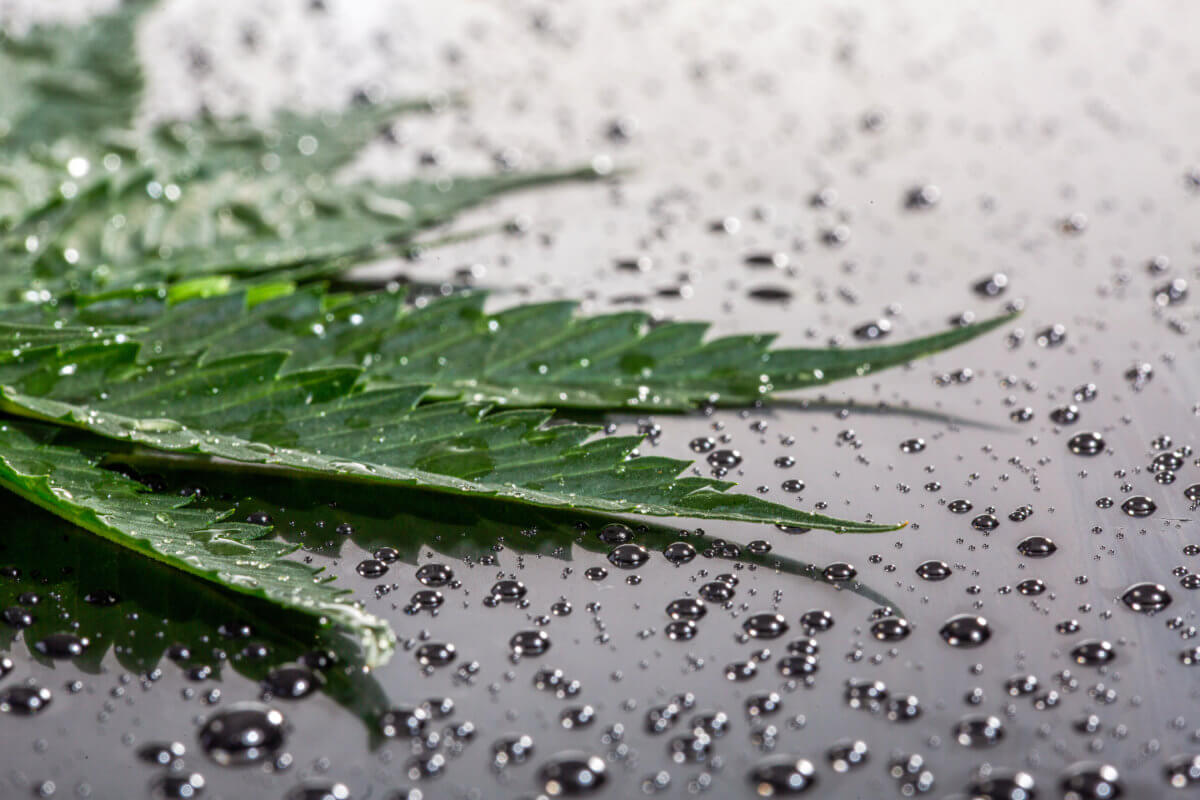
By Angel Fernandez and Felipe Cisternas, MyFloraDNA
Pathogens cause diseases when looking for a host body to infect. They come in diverse forms: bacteria, fungi, worms, viruses, and also prions. Pathogens are one of the significant threats to cannabis fields. These silent visitors may cause your plants to produce fewer trichomes, small buds, or even death.
Identifying each pathogen will help to understand how each of them propagates, its symptoms, and its consequences. In this blog, you’ll find everything you need to know about:
- Hop Latent Viroid
- Botrytis (gray mold)
- Cannabis Cryptic Virus
- Lettuce Chlorosis Virus
- Alfalfa Mosaic Virus
- Beet Curly Top Virus
Hop Latent Viroid
Hop Latent Viroid (HLV) is a single-stranded infectious RNA that interferes with cannabis plant growth. Once the Hop Latent Viroid has infected the plant, the obvious sign of infection is dudding, which is when the plant grows smaller, shorter leaves in the process. HLV can also cause other symptoms, such as yellowing, and necrotic and malformed leaves.
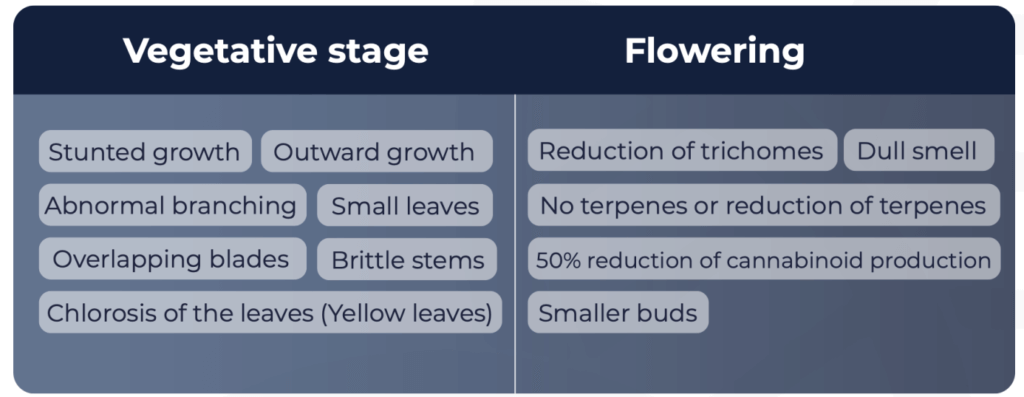
These plants will have fewer traces of trichomes in their structure. Detecting HLV on time is crucial to avoid an existential threat to the entire garden.
Botrytis Cinerea
Botrytis Cinerea, or bud rot, is a fungus that damages the tender parts of plants in areas of high humidity. This necrotrophic fungus will invade damaged tissue. The symptoms include smaller buds, the development of gray mass spores, and brown, water-soaked spots found on leaves. A major consequence of this fungus is that it can kill cannabis plants within a week.
Lettuce Chlorosis Virus
Much like Botrytis Cinerea, Lettuce Chlorosis Virus can potentially destroy an entire garden. Likewise, Lettuce Chlorosis Virus occurs in lettuce grown in southern California. The plants change into a frail yellow color. They will become very brittle and stunted. One way to prevent the virus from spreading is to take a sample of tissue from a cannabis plant and perform qPCR tests to make sure the plant is virus free.
Cannabis Cryptic Virus
Cannabis Cryptic Virus is a double-stranded RNA virus causing subtle symptoms to plants. Some of these symptoms include smaller flower quality and stunted growth. Thus, this virus can affect plants by producing fewer terpenes, cannabinoids, and trichomes, which are three essential components that serve different purposes for cannabis plants.
Alfalfa Mosaic Virus
Another pathogen is Alfalfa Mosaic Virus, the virus starts by killing cells within a plant and this can be a potential problem for groups of plants. Aphids, small insects, will begin to infect one plant after another as they move and transmit the virus instantly. Seed transmission is also a possibility. There’s no known cure so it is best to care for plants to avoid infection from this type of virus. The symptoms are the same as many of the previous viruses and diseases; stunted growth, slower yield, and calico or yellow color is typically seen on leaves. The good thing is that this can be detected on time by performing serological tests, or antigen and antibody tests to help prove immune status.
Beet Curly Top Virus
Lastly, Beet Curly Top Virus is a dangerous plant virus containing a single-stranded DNA that can affect all kinds of plants, especially cannabis plants, giving them a serious infection. Symptoms include showing a yellow color with purple veins, leaves beginning to curl, seedlings dying out, and deformation beginning at the buds. Since this virus contains a protein carrying a unique code that allows for host cell replication if the virus is not detected on time the cannabis plants will die.
Recognizing the danger these pathogens pose to cannabis plants, and acknowledging their potential to prevent cultivation is very important for growth and success.
If you would like to know more about cannabis pathogens and how to prevent infections in your garden, download our free guides about How to treat Infected Material and The Ultimate Hop Latent Viroid Guide.
Keep growing safe and healthy cannabis!
 Author: Angel Fernandez, CEO & Co-Founder at MyFloraDNA. “It is time to fill in the gap between DNA Sciences and Agriculture. MyFloraDNA is willing to show the huge opportunities that exist for modern genetics in agriculture. Now, it is time for another agricultural revolution”
Author: Angel Fernandez, CEO & Co-Founder at MyFloraDNA. “It is time to fill in the gap between DNA Sciences and Agriculture. MyFloraDNA is willing to show the huge opportunities that exist for modern genetics in agriculture. Now, it is time for another agricultural revolution”
Co-author: Felipe Cisternas, Intern at MyFloraDNA
Editor: Ashlyn East, Intern at MyFloraDNA
About MyFloraDNA: We are a genomic laboratory based in Woodland California, delivering modern genomics for the cannabis industry. MyFloraDNA provides data-driven decisions to help breeders increase their plant yields.
Our services include Trait detection (cannabinoid profile and sex/gender ID), Pathogen Detection, and Genetic Validation Services. We offer breakthrough solutions using the inner power of your plants.
Who asks if you think you have an infection in your garden?
We highly recommend you consult with DNA Laboratories. They will guide you through the process, test your plants, and let you know if they are infected with HLV or not.
Member Blog: What Growers Should Know About Hop Latent Viroid
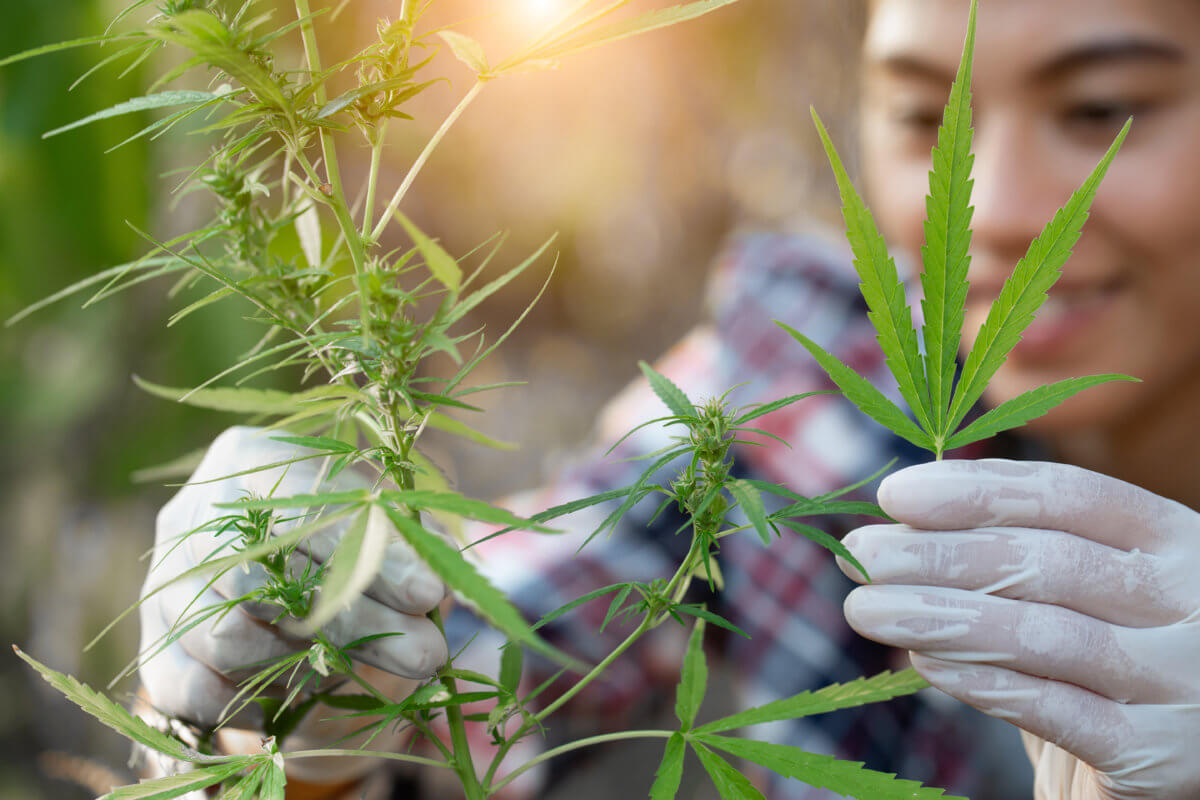
by Angel Fernandez, María Zuccarelli, and María de Catarina, MyFloraDNA
For many years, growers and breeders have speculated why “dud plants” are seen across different cannabis crops.
It is a fact that cannabis has faced many viral infections. Due to viruses and viroids, some varieties mutated into genetic changes over time, altering the evolution of the plant.
But… how can we detect Hop Latent Viroid (HLV)?
Hop Latent Viroid (commonly known as Dudding Disease) is a single-stranded, circular infectious RNA. It is not a virus. Let us explain the difference:
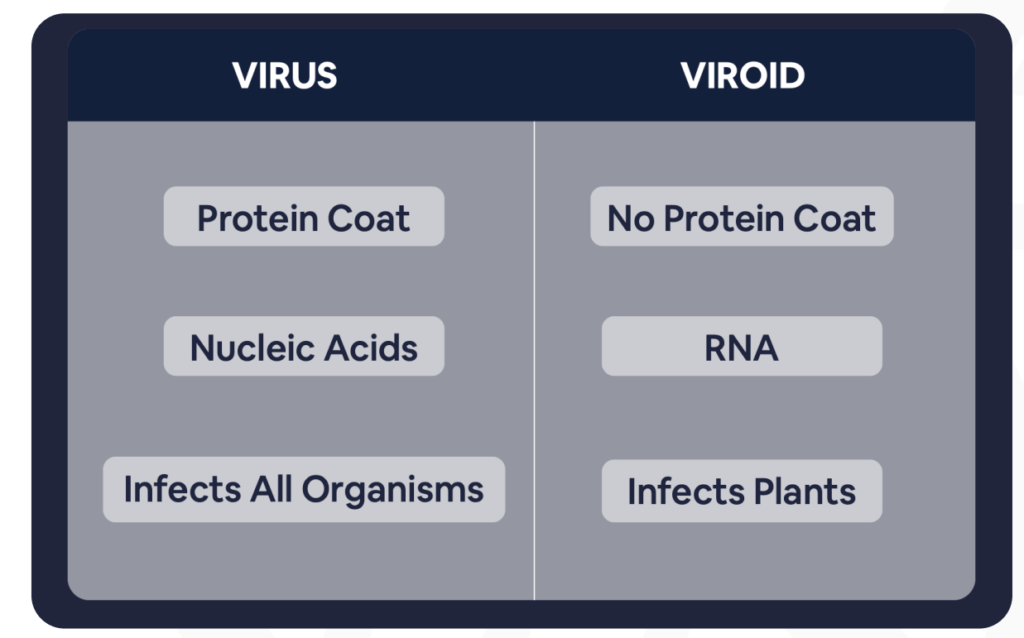
Viroids only replicate in plants. Also, viruses are more complex than viroids. Viroids are compounded by only RNA, while viruses are composed of a protein capsule enveloping their genetic material.
Viruses infect new hosts only once they enter a host and replicate on it. Viroids are transmitted through direct contact of a healthy plant with an infected one. Also, can be transmitted by contaminated tools and instruments (gloves, scissors, tweezers, even human hands).
Talking about HLV, we must remember that this viroid is latent, so there are many asymptomatic transmissions. It can spread without symptoms, and you will only realize it when it is too late.
HLV Symptoms:
HLV is a silent viroid, meaning that this viroid may or may not show early visual clues from its presence. Some physical symptoms in cannabis plants are:
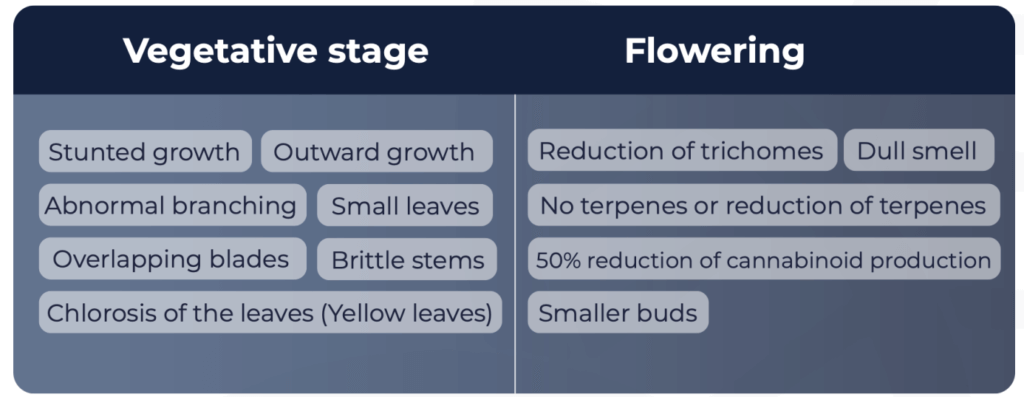
What about transmission?
This issue is important, so please take note. If you have any doubts about an infection of Hop Latent Viroid in your garden, TREAT EVERYTHING AS IF IT IS INFECTED. Download here our guide on how to treat infected material.
HLV and other viroids in your garden or greenhouse can spread quickly from infected to healthy plants. The main transmission causes are:
- Infected equipment: sterilize the equipment before working on new plants to reduce the possibility of contamination.
- Clones: before cutting, we recommend doing a complete pathogen test, to avoid infected clones.
- Seeds: this is currently under research, but HLV has an 8% chance of being present in the seeds of an infected mother plant.
- Human touch: cultivation managers and staff have to sterilize their hands and gloves before jumping from one plant to another. A simple touch is enough to transmit HLV.
- Bugs and pests: bugs and pests are always present, and their bites may transmit HLV, spreading the pathogen through your entire garden in a blink of an eye.
How can you prevent HLV?
Here are some essential tips:
- Keep your equipment clean. You can read more about how to sterilize your tools on our Instagram profile.
- Make sure you have pests under control
- Tissue culture: HLV can travel through the plant’s vascular system and may be left behind in older tissues as plants develop. It can outgrow the problem by producing clones from the infected plant. The more cuttings a grower roots, the higher the chances of selecting a clean one.
- Pay special attention when visits come by: HLV may come in a visitor’s hand, glove, or even shoes!
- When a plant or leaf enters, please do not accept it unless it has a negative DNA HLV test. It is the only way you can be sure it is not a threat to your garden.
 Who asks if you think HLV may be in your garden?
Who asks if you think HLV may be in your garden?
Thank you for reading! We hope you find this information useful. In case of any doubts, do not hesitate to ask us regarding any related topic and download our Complete HLV Guide here. We highly recommend you consult with DNA Laboratory. They will guide you through the process, test your plants, and let you know if they are infected with HLV or not.
Angel Fernandez, CEO & Co-Founder at MyFloraDNA. “It is time to fill in the gap between DNA Sciences and Agriculture. MyFloraDNA is willing to show the huge opportunities that exist for modern genetics in agriculture. Now, it is time for another agricultural revolution”
Co-author: María Zuccarelli, CMO at MyFloraDNA.
Editor: María de Catarina, PR Intern at MyFloraDNA.
About MyFloraDNA: We are a genomic laboratory based in Woodland California, delivering modern genomics for the Cannabis Industry.
Our services include Trait detection (cannabinoid profile and sex/gender ID), Pathogen Detection, and Genetic Validation Services. We offer breakthrough solutions using the inner power of your plants.

 Sarah Taylor-Laine is a plant science polymath. Sarah has taught and developed college-level courses related to general biology, plant biology, and cannabis sciences at several institutions, most recently at Beal University. She has also worked across many industries including agriculture, horticulture, and arboriculture, performing diverse work in research, quality control, product development, regulatory affairs, scientific communication, and field-based consulting.
Sarah Taylor-Laine is a plant science polymath. Sarah has taught and developed college-level courses related to general biology, plant biology, and cannabis sciences at several institutions, most recently at Beal University. She has also worked across many industries including agriculture, horticulture, and arboriculture, performing diverse work in research, quality control, product development, regulatory affairs, scientific communication, and field-based consulting.


 Author:
Author: 


 Who asks if you think HLV may be in your garden?
Who asks if you think HLV may be in your garden?
Follow NCIA
Newsletter
Facebook
Twitter
LinkedIn
Instagram
News & Resource Topics
–
This Just In
Join an NCIA Committee: Lead, Collaborate, and Shape the Future of Cannabis
NCIA Accepting Applications For 2026-2028 Board of Directors Term